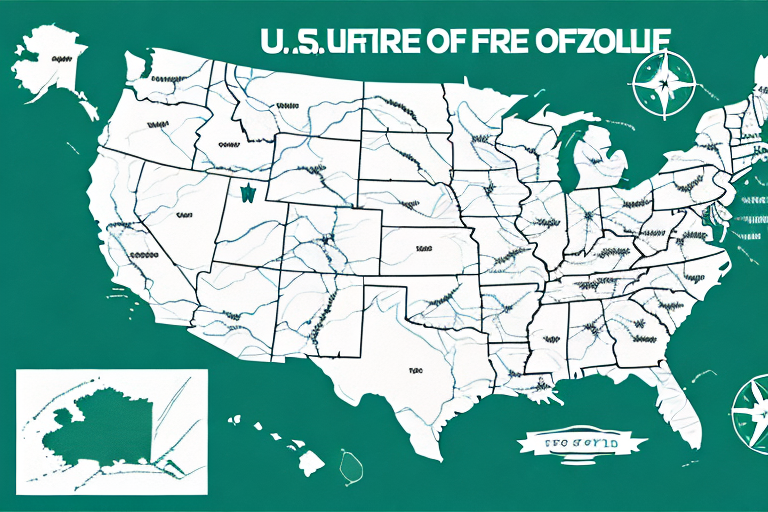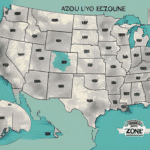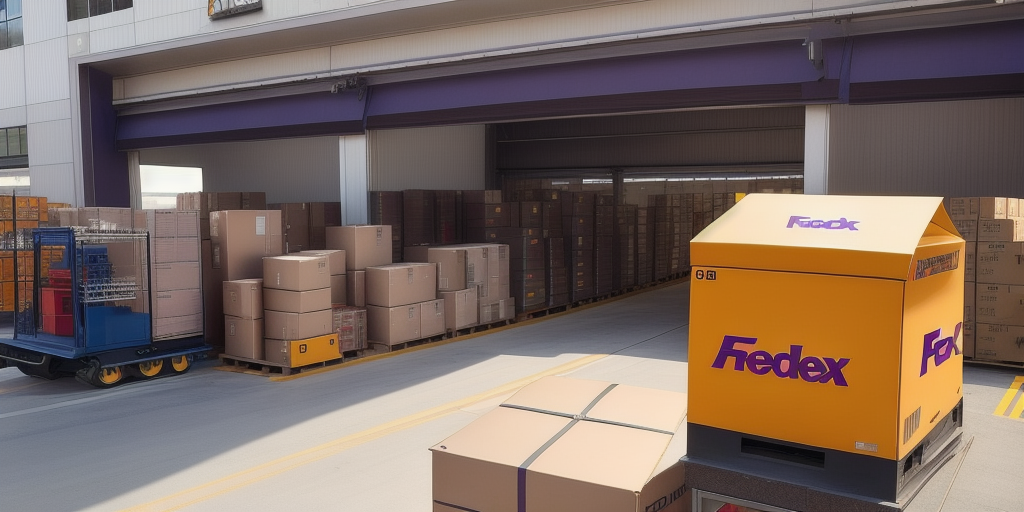Understanding UPS Shipping Rates: Comprehensive Pricing Guide for 2024
If you frequently ship packages through UPS, understanding how the company determines its shipping rates is crucial. UPS shipping rates can vary based on factors such as size, weight, distance, and delivery speed. In this article, we provide an in-depth analysis of UPS shipping rates, including how to choose the right shipping method for your business, factors affecting pricing, and strategies to save on shipping costs.
How to Choose the Right UPS Shipping Method for Your Business
Choosing the appropriate shipping method with UPS can save you both time and money. If you need to deliver your package quickly, consider express shipping options like UPS Worldwide Express. For less urgent shipments, ground shipping might be more cost-effective.
- Express Shipping: Ideal for urgent deliveries with faster transit times.
- Ground Shipping: Suitable for non-urgent shipments, offering cost savings on larger or heavier packages.
Additionally, consider the package’s size and weight to select the appropriate shipping method that ensures safe transportation without incurring extra fees or causing damage.
The destination of your package also plays a significant role in selecting the shipping method. For international shipments, you’ll need a method that handles customs clearance and necessary documentation. UPS offers various international shipping options, including UPS Worldwide Express, UPS Worldwide Expedited, and UPS Worldwide Saver.
Lastly, evaluate the level of tracking and insurance required for your package. UPS provides options ranging from basic tracking and insurance to advanced services like UPS Signature Tracking and UPS Proactive Response Secure, ensuring your package is delivered safely and securely.
Factors That Affect UPS Shipping Rates
Several factors influence UPS shipping rates. Key factors include:
- Distance: Longer distances typically result in higher shipping rates.
- Size and Weight: Larger or heavier packages occupy more space and require more resources, increasing costs.
- Delivery Speed: Faster delivery options come at a premium compared to standard shipping.
- Package Type: Shipping hazardous or fragile items may require special handling, raising costs.
- Package Value: High-value items may necessitate additional insurance or security measures.
- Seasonality: During peak seasons like holidays, shipping rates may increase due to higher demand.
- Weather Conditions: Severe weather can cause delays and require additional precautions, affecting rates.
Understanding these factors can help you anticipate shipping costs and make informed decisions to manage your budget effectively.
How to Save Money on UPS Shipping Costs
While UPS shipping costs can add up, there are several strategies to help reduce your expenses:
- Bulk Discounts: Take advantage of discounts offered for bulk orders to lower your per-package cost.
- Choose Cost-Effective Delivery Options: Opt for ground shipping or consolidated shipping methods when speed is not a priority.
- Accurate Measurements: Ensure your packages are accurately measured and weighed to avoid unexpected fees.
- Use Flat-Rate Shipping: Flat-rate options can be cost-effective for heavy or bulky items, as costs are based on box size rather than weight.
- Leverage Free UPS Packaging: Utilize packaging materials provided for free by UPS to reduce overall shipping costs.
- Compare Shipping Carriers: Consider using alternative shipping carriers like USPS or FedEx, which may offer lower rates for certain packages or destinations.
Implementing these tips can lead to significant savings on your UPS shipping expenses.
Understanding the Different Types of UPS Shipping Services
UPS offers a variety of shipping services tailored to different needs and budgets. The main categories include Air, Ground, and International shipping, each with multiple options:
- Air Shipping: Ideal for urgent deliveries with faster transit times. Options include:
- Next Day Air
- 2nd Day Air
- 3 Day Select
- Ground Shipping: More affordable, suitable for non-urgent deliveries and larger packages. Options include:
- Ground
- 3 Day Select
- SurePost
- International Shipping: For shipments beyond the U.S., offering various levels of speed and service.
Understanding the distinctions between these services can help you select the best option for your specific shipping requirements.
The Pros and Cons of Using UPS for Shipping
Choosing UPS for your shipping needs comes with its advantages and disadvantages:
- Pros:
- Reliability: UPS has a strong reputation for reliable and timely deliveries.
- Extensive Network: A vast network of drop-off locations enhances convenience for customers.
- Variety of Services: Offers a range of shipping options, including ground, air, and international services.
- Cons:
- Cost: UPS can be cost-prohibitive for small businesses compared to other carriers.
- Delivery Speed: In some cases, delivery times may not be as fast as competitors like FedEx or DHL.
- Potential for Package Issues: Like all carriers, there is a risk of lost or damaged packages.
Weighing these pros and cons can help you decide if UPS is the right shipping partner for your business.
How to Calculate UPS Shipping Rates
To calculate UPS shipping rates, consider the following factors:
- Package Weight and Size: Heavier and larger packages incur higher costs.
- Delivery Distance: Longer distances typically lead to higher shipping rates.
- Delivery Speed: Faster delivery options come at a premium.
UPS provides an online rate calculator that allows you to estimate shipping costs based on your package details.
Additionally, UPS offers discounts for businesses that frequently ship packages. By signing up for a UPS account and enrolling in the UPS My Choice program, businesses can access discounted shipping rates, free package pickup, and delivery alerts.
Tricks to Negotiate Better Rates with UPS
Negotiating better shipping rates with UPS is achievable, especially for small and medium-sized businesses. Here are some tips:
- Understand Your Shipping Volume: Knowing your shipping volumes can help you negotiate better rates based on your business needs.
- Shop Around: Compare rates with other carriers to leverage better deals with UPS.
- Build a Relationship: Establishing a long-term relationship with your UPS representative can lead to more favorable rates.
- Understand Shipping Options: Familiarize yourself with UPS’s various shipping services to negotiate rates tailored to your specific requirements.
- Stay Informed on Promotions: Take advantage of UPS promotions and discounts throughout the year to reduce shipping costs.
- Bundle Services: Combining shipping services with other UPS offerings, such as printing or packaging, can unlock additional discounts.
Implementing these strategies can help you secure more competitive shipping rates with UPS.
Understanding the Differences Between Ground, Air, and International Shipments
UPS provides a range of shipping services tailored to different needs and budgets:
- Ground Shipments:
- Most cost-effective for domestic shipping.
- Suitable for heavier items that are not time-sensitive.
- Average delivery time ranges from 1 to 5 business days within the U.S.
- Air Shipments:
- Faster delivery for urgent shipments.
- Ideal for time-sensitive documents and medical supplies.
- Various options like Next Day Air, 2nd Day Air, and 3 Day Select.
- International Shipments:
- Expands business reach beyond national borders.
- Requires handling of customs clearance and documentation.
- Offers services like UPS Worldwide Express and UPS Worldwide Saver.
Choosing the right type of shipment ensures that your packages are delivered efficiently and cost-effectively.
Tips for Packaging Your Products for Safe and Efficient Delivery with UPS
Proper packaging is essential to prevent damage and avoid extra fees when shipping with UPS. Follow these guidelines to ensure your packages are secure:
- Select the Right Box Size: Use appropriately sized boxes to minimize movement and protect the contents.
- Use Quality Materials: Invest in sturdy boxes, cushioning materials like bubble wrap or packing peanuts, and strong tape.
- Follow UPS Packing Guidelines: Adhere to UPS’s guidelines for packing fragile or hazardous items to ensure safe delivery.
- Label Clearly: Ensure labels are clear and legible, with no obstructions or errors.
By implementing these packaging tips, you can enhance the safety and efficiency of your shipments with UPS.
Common Mistakes to Avoid When Using UPS for Shipping
Avoiding common mistakes can streamline your shipping process and reduce costs. Here are some pitfalls to watch out for:
- Poor Labeling: Incorrect or unclear labels make it difficult to track packages and can lead to delays.
- Misjudging Size and Weight: Inaccurate measurements can result in unexpected fees and charges.
- Sending Prohibited Items: Shipping hazardous or restricted items can lead to legal consequences and hefty fines.
- Ignoring Tracking and Insurance: Failing to utilize tracking and insurance options can leave your packages vulnerable.
Being mindful of these common mistakes can enhance your shipping experience with UPS.
How to Track Your Packages with UPS
UPS offers a convenient online tracking tool to monitor your packages in real-time. To track your package:
- Visit the UPS Tracking page.
- Enter your tracking number in the provided field.
- Click "Track" to view the latest shipping status and estimated delivery date.
Additionally, signing up for UPS My Choice provides enhanced tracking features and delivery alerts, ensuring you stay informed throughout the shipping process.
Understanding Additional Fees and Charges with UPS Shipping
Beyond the base shipping rate, several additional fees and charges may apply when using UPS:
- Insurance: Optional coverage for high-value items.
- Delivery Confirmation: Provides proof of delivery.
- Signature Confirmation: Requires a signature upon delivery for added security.
- Fuel Surcharges: Additional fees based on current fuel prices.
- Residential Delivery: Higher rates for deliveries to residential addresses.
- Saturday Delivery: Extra charges for weekend deliveries.
Understanding these additional fees helps you anticipate total shipping costs and make informed decisions about the services you require.
Comparing UPS Rates to Other Major Carriers
While UPS is a reliable shipping carrier, it's essential to compare its rates with other major carriers like FedEx and USPS to ensure you’re getting the best deal. Factors to consider when comparing include:
- Service Offerings: Different carriers offer various shipping options and speeds.
- Pricing: Rates can vary based on package size, weight, and destination.
- Discounts: Availability of bulk discounts and special promotions.
- Delivery Reliability: Track record for on-time deliveries and handling of packages.
By shopping around and comparing rates and services, you can select the best carrier that meets your business’s specific shipping needs.
In conclusion, understanding UPS shipping rates and the factors that influence them allows you to choose the right shipping method and implement cost-saving strategies. With UPS's diverse shipping services and options, you can find a delivery solution tailored to your business requirements.




















